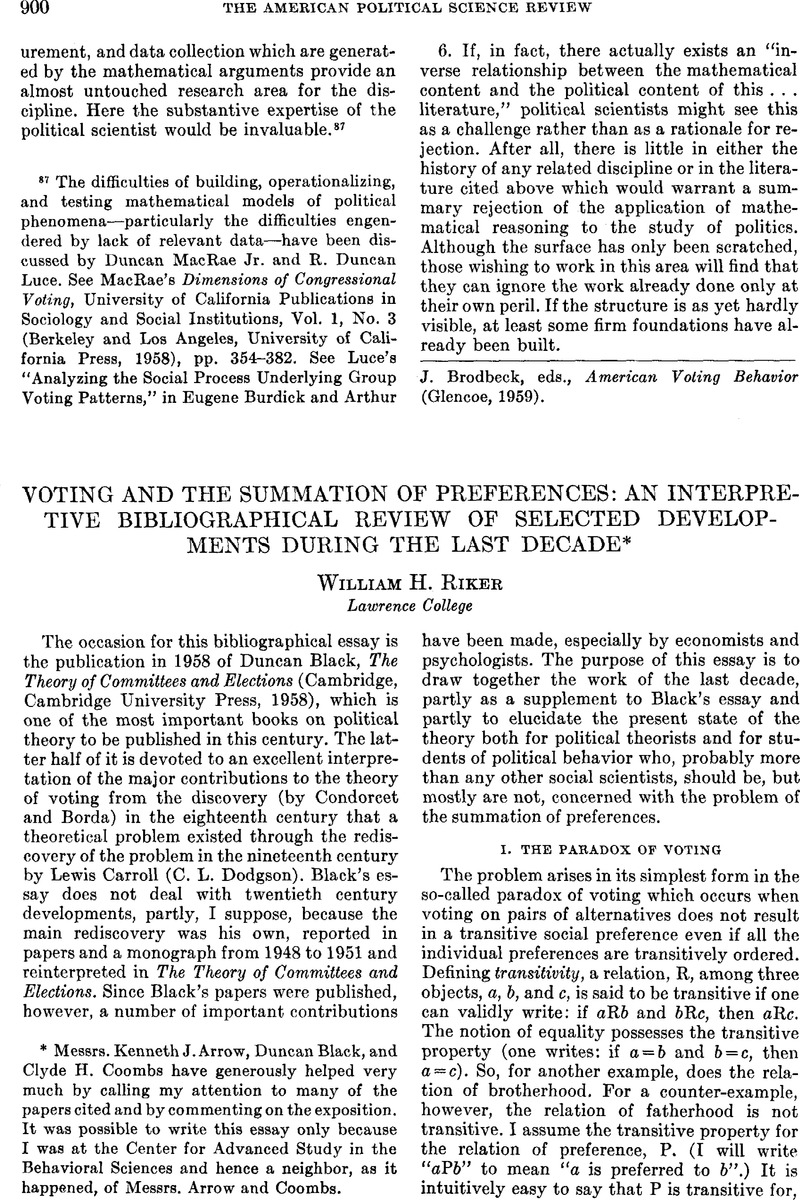Published online by Cambridge University Press: 01 August 2014

Messrs. Kenneth J. Arrow, Duncan Black, and Clyde H. Coombs have generously helped very much by calling my attention to many of the papers cited and by commenting on the exposition. It was possible to write this essay only because I was at the Center for Advanced Study in the Behavioral Sciences and hence a neighbor, as it happened, of Messrs. Arrow and Coombs.
1 When ranked by preference alone (with indifference not allowed), the alternatives are said to be strongly ordered. Weak orderings are especially appropriate when choice occurs in a continuum, while strong orderings are appropriate when the alternatives are discrete. Economists, who deal with continuous phenomena like money, find weak orderings most useful; but political scientists may find strong orderings simpler to work with and just as useful (for many political alternatives are discrete).
2 At least three coherent opinions are possible on Rousseau's two questions. If “a” is a yes answer to (a) and “ã” a no answer to it, and similarly for (b), then at least these distinct and coherent opinions are possible, x: (a,b), y: (a,b), z:(ã,b), and possibly w: (ã,b). In any event the paradox may then arise.
3 There is a substantial amount of recent work on individual choice in gambling situations, most of which is, however, ancillary to our present interests. The most significant and relevant of this work is: Davidson, Donald, Suppes, Patrick, and Siegel, Sidney, Decision Making: An Experimental Approach (Stanford, Stanford University Press, 1957)Google Scholar; Davidson, Donald and Marshak, Jacob, “Experimental Tests of a Stochastic Decision Theory,” in Churchman, C. W. and Ratoosh, P., ed., Measurement: Definition and Theories (New York, John Wiley and Sons, 1959)Google Scholar, chapter 13; and Royden, H. L., Suppes, P., and Walsh, K., “A Model for the Experimental Measurement of the Utility of Gambling,” Behavioral Science, Vol. 4 (1959), pp. 11–18 CrossRefGoogle Scholar.
Comments
No Comments have been published for this article.